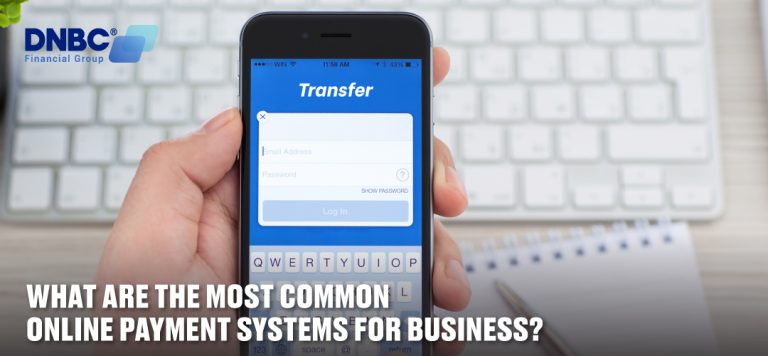In business, the shopping experience is becoming more and more crucial. Customers may abandon their shopping carts if they are dissatisfied with the checkout process because there aren’t any of their preferred payment options available. This lowers sales. Companies should provide a variety of payment options to meet client expectations and enhance the checkout page experience. However, before you can choose a system that works for your company, you must first be aware of the most popular online payment methods for your industry.
Market overview
Before thinking about popular payment methods across the world, we should take a look at the current market and how it evolves with technology nowadays.
When running a business, we often follow the trends instead of creating a new propensity. Of course we should think in the way of “nothing is impossible”, but have to admit that in general, SMEs have limited funds to invest in R&D (Research and Development) so we may learn rules before playing the game.
It is obvious that the global payment industry grows to adapt with consumer demands. In the past, people exchanged values via coins and then replaced them with cash. It is because lightweight money was in demand at this time.
Let’s turn back to the current situation, we are in the era of 4.0 technology which is a vibrant economy and digitalization. Consumers nowadays are using mobile devices and being online for the whole time. Therefore, not only business is operated via E-commerce but also M-commerce.
Additionally, the world is getting flatter, and people around the world can connect with each other easily, leading to the booming of international trading. However, is the recent payment process different from many years ago which mainly leaned on the international banking system using letter of credit (LC)?
There are vast reasons that resulted in today’s online payment methods, and these ways of payment were developed to meet the consumer needs.

What are the most common online payment systems for business?
Popular payment systems worldwide
Credit / Debit cards
Credit cards and debit cards continue to play a prominent role in the global payment sector, both online and offline, despite transaction and conversion charges. It can sometimes be challenging to make purchases abroad because not all cards are accepted in all places because every nation has its own issuers. It is important to use cards from international issuers namely Mastercard, Visa or American Express.
Payment cards can be used in 2 main forms: physical cards and virtual cards. Card holders are able to pay with plastic credit or debit cards at the points of sales or ecommerce. Many users often subscribe to streamline services with digital cards because of its security features.
With new technology, many businesses accept contactless card payment in store and public services like transportation.
Because of the popularity of payment card usage, there are many arousing risks for users in terms of security and frauds, resulting in stronger authentication when using card payment to avoid chargeback for business.

Popular payment systems worldwide – Credit/Debit cards
Banking transfers
While not everyone has a credit card, we can be sure that almost all of the customers have at least one bank account to keep money in. As you can see, credit cards are a common method of payment, but banking transfers are essential if you want to keep clients who don’t use credit cards from abandoning their shopping carts.
Regarding the volume of payments, the B2B model is completely different from the B2C one. We can only use credit cards to pay for low-value purchases, and every credit card has individual spending limitations for each cardholder. This card-using method might not work in huge deals in B2B, so the stage is for banking transfers.
Moreover, the innovation of open banking has helped banks and non-bank companies (fintech firms) work together effectively, resulting in fast banking transfers and borderless remittance. That is why banking transfers are still the most favourable option in business to business transactions.

Popular payment systems worldwide – Banking transfers
Ewallets
E-wallet is an alternative payment method for cards in online purchases and contactless mobile payment. These types of digital wallets are linked to one or multiple credit card accounts to make payment or can be topped up to its prepaid account from credit or debit cards.
Besides the checkout feature for merchants, ewallet also helps users initiate P2P payments easily. It is simple to create an ewallet account, and many businesses now use biometric authentication, such as a fingerprint or facial/iris recognition, for enhanced security when you make a payment or transfer money online.
Users prefer to use e-wallets because they don’t have to enter credit card details every time making payments. By checking out with digital wallets, customers are able to pay in a quicker process but safer.
In addition, some e-wallet providers have a chargeback feature, facilitating consumers to pay in confidence and get a refund if frauds happen.

Popular payment systems worldwide – E-wallet
Crypto currencies
Crypto currencies are a new concept of money in the digital era. The digital tokens used in cryptocurrencies. They are a sort of digital currency that enables online direct payments between individuals. Cryptocurrencies have no set legal or fundamental value; instead, their market value is determined by how much buyers are willing to pay. National fiat currencies, on the other hand, benefit from being recognised as legal currency, which contributes to some of their value. There are many cryptocurrencies, Bitcoin and Ether are the two most well-known.
To make a crypto currency transaction, both parties will need to be involved in a decentralised system which uses electronic messages to transmit payment data. These electronic instructions include electronic addresses of the parties involved, the quantity of currency to be traded, and a time stamp.
Until now, crypto currencies are still not seen as a form of currency in many countries around the world because of their characteristics don’t meet some requirements to be used as money such as:
- Widely accepted means of payment
- Store of value
- Unit of account
Therefore, even if cryptocurrencies can be used to make payments, their usage as a form of payment is currently limited and they lack the essential features of money. Digital currency issued by a central bank is the only sort of digital currency that might be regarded as money.

Popular payment systems worldwide – Crypto currencies
More about DNBC Financial Group
DNBC Financial Group is an international payment corporation which was established in 2017. We offer money transaction solutions anywhere in the world.
By setting a high standard for innovation in the money transfer platform since 2017, DNBC Financial Group has given full payment solutions to collecting payments, transferring and managing funds.
Currently, DNBC Financial Group has a considerable number of customers all around the world and is well-known as one of the best international money transfer service providers.
Or please contact DNBC
![]() Email: [email protected]
Email: [email protected]
![]() Phone Number:
Phone Number:
- +65 6572 8885 (Office)
- +1 604 227 7007 (Hotline Canada)
- +65 8442 3474 (WhatsApp)



 DNBC Team
DNBC Team